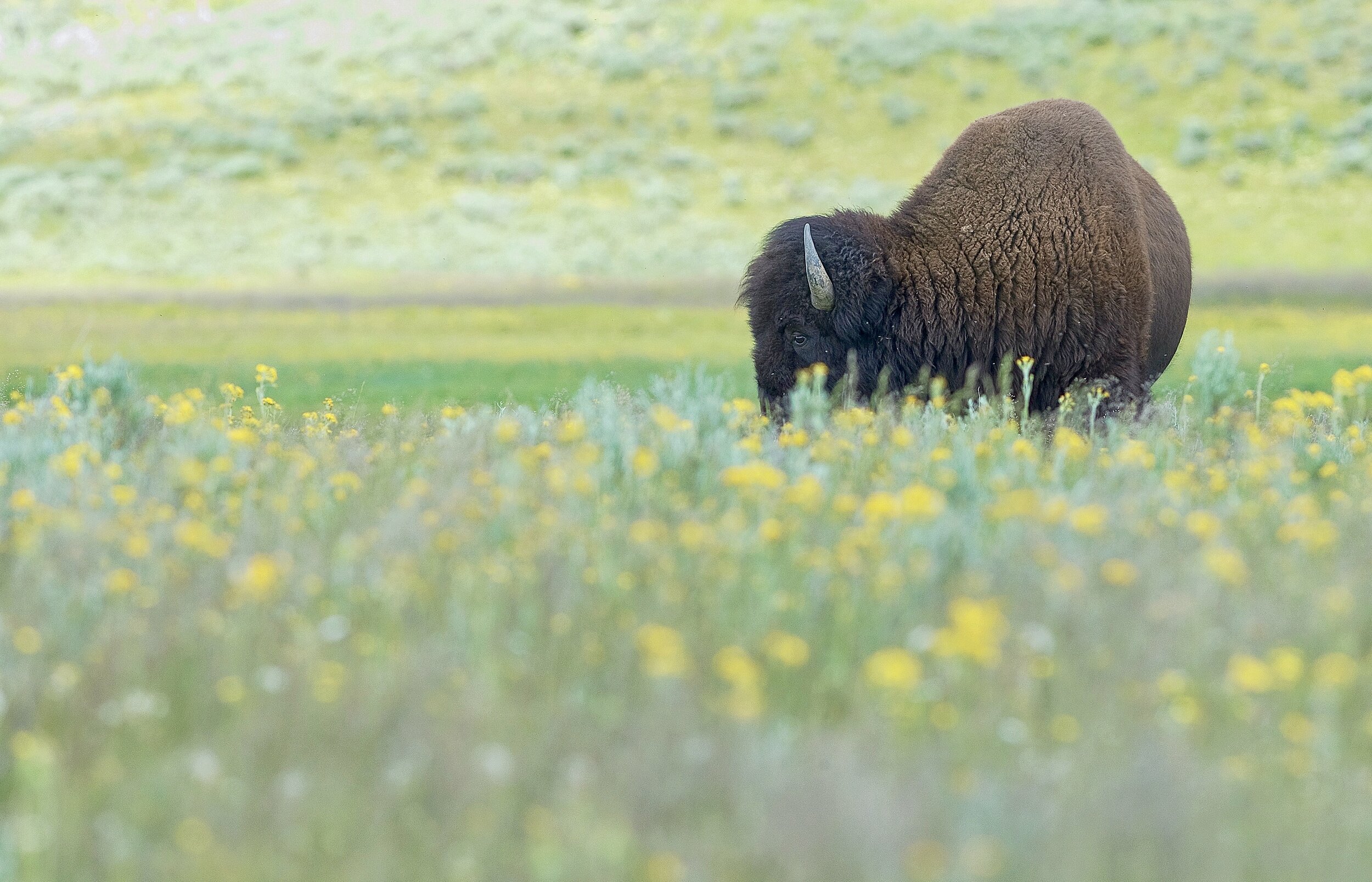How will Bison Change the Environment?
This month The Wildlife Trusts announced that they are going to be bringing back a small group of bison to a woodland in Kent in a move to restore ancient woodland. Ellen Daugherty looks into how this ambitious project will shape the environment.
Photo credit: Wolfgang Hasselmann/Unsplash
It’s been 6,000 years since bison roamed the British Isles. But now, thanks to The Wildlife Trusts, a flagship project in Kent is bringing back this iconic keystone species to the British countryside. In spring 2022 one male and three female bison will be released into Blean woods. The Wilder Blean project aims to naturally manage one of the largest areas of ancient woodland in the UK, which is part of the charity’s vision to invest in nature-based solutions.
Our natural ecosystems are fractured and broken due to centuries of over-hunting and climatic changes. However, recently there’s been an increase in rewilding projects that are working restore the natural balance. We’ve seen reintroduction success stories from the likes of beavers, pine martens, white storks and red kites. For instance, in the last year, there’s been a boom in landowners wanting beavers reintroduced into their land. Their ability to encourage a diverse range of habitats and prevent floods has made them an attractive conservation management solution. Although the reintroduced bison won’t be able to roam out of Blean woods, this project marks the first crucial step to bringing back these large herbivores to the UK. The hope is that bison will be shown to be just as ecologically important as beavers and be in demand to be reintroduced across the country.
Photo credit: Niklas Hamann/Unsplash
Bison fill a missing ecological niche through their ability to maintain a mosaic of habitats that support a variety of other species. By eating bark, creating dust paths, turning up soil and dispersing seeds, they create a healthy, varied ecosystem. Bison are considered to be a keystone species because they have a disproportional impact on their surrounding environment. The hope is that the Wilder Blean project will demonstrate how this species could be used to manage habitats across the country.
Grazing is the defining behaviour of large herbivores. Some conservationists claim that overgrazing in the UK has stripped our land of its ancient landscape, creating a monotonous environment with little diversity. So why would we want another grazing species? In the past, the argument against reintroducing bison has come from the idea that cattle fill a very similar ecological niche. However, it's been shown that the roles of bison and cattle differ. Bison forage more frequently and have a selective diet. In general, they consume more herbs, flowering plants, shrubs and bark. To access these food sources they break through other vegetation, creating scrubland and building a mosaic of different habitats. Bison grazing behaviours can increase soil filtration, improve plant composition, decrease invasive plants and decrease bare ground coverage. Some reports even suggest that the carbon storage potential in soils can be increased through bison grazing.
“Bison fill a missing ecological niche through their ability to maintain a mosaic of habitats that support a variety of other species.”
One of the most important behaviours of bison is wallowing; the creation of a depression in the ground where they can roll around and have a “dust bath”. This is important because it allows the bison to shed their winter coats, avoid insect bites and partake social interactions. Amazingly, wallowing also has a broad range of impacts on the environment. Researchers have found a higher abundance and diversity of insect species in abandoned wallows, which helps to support other consumers higher up the food chain. Abandoned wallows can also fill with water, providing freshwater habitats for amphibians and other pond-dwelling species. This is just one example of how a relatively simple behaviour can have vast knock-on effects to the rest of the ecosystem by supporting a large, interconnected food web.
Photo credit: Hans Veth/Unsplash
Rutting and migrating behaviours ensure that bison are constantly on the move, creating these new habitats as they go. If this trial is successful, it would be interesting to see the full impact that a group of travelling bison could have in a larger area. In the US, the environmental impact of migrating bison can be seen from space. This eloquently demonstrates how a colossal spring-time change in the environment is brought about by the bison’s capacity to engineer plant growth. Although the impacts in the UK will be on a much smaller scale, there’s no doubt that the reintroduction of bison could alter our landscape immensely.
You might be thinking that bison behaviour seems rather destructive - and you would be right, but environmental disruptions help to create varied habitats that support a multitude of species. In fact, threatened birds such as the woodlark and red-backed shrike thrive in disrupted environments. Many of our native plants species have evolved to withstand the environmental change caused by large herbivores. In the last couple of centuries, we’ve seen our natural ecosystems decimated and we’ve lost these key ecosystem engineers that manage to support so many other forms of life. Bringing back “umbrella” species helps to mitigate natural disasters, increase biodiversity and provides less intensive management solutions. Bison are not only an important tool for future conservation efforts but they are also the next step in creating a wilder Britain.
Keep up to date with this project by following updates from Kent Wildlife Trusts or by having a look at other UK reintroductions on Rewilding Britain’s website.


